“Coffee can’t wait; it dictates what it needs and when, and we have to listen,” Delfina Porras Solís from Alto El Vapor coffee farm explained, looking out over the vast expanse of lush green coffee plants her family has cultivated for generations. We’d just maneuvered our way up the side of a mountain, standing in the back of the family’s blue pickup to reach their high-altitude farm in Santa María de Dota, Costa Rica. The ride was dotted with views of rich, rust-colored soil, banana trees, ripe avocados, and coffee plants.
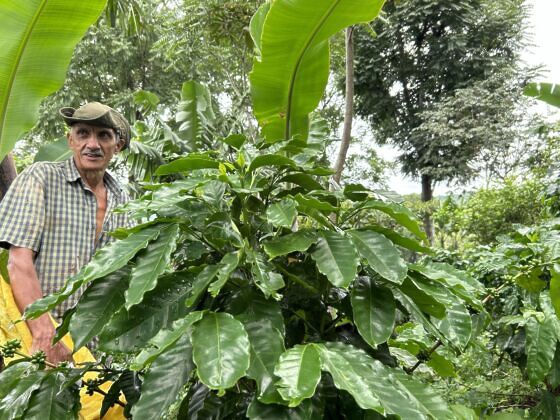

In Costa Rica's Central Valley, Experience and Support the Heart of Traditional Coffee Culture
Breathless from the altitude and the views, I listened as Porras Solís and her family shared exactly how their lives have revolved around the planting, cultivating, harvesting, and processing of coffee for generations. Recently, they’ve added a tourism aspect to the business to make it more viable.
Their story mirrors that of many farmers at other micro beneficios, or small coffee farms, across the region. However, these farming families now face a troubling chapter marked by the decline of traditional organic coffee farming. For the past few years, small farmers have contended with labor shortages, rising material costs, and expanding coffee cooperatives that set low rates. Not to mention more animate issues like beetles the size of poppy seeds that burrow into ripe coffee beans, potentially destroying entire harvests if not caught in time.
It’s a livelihood that doesn’t allow for much rest. As Porras Solís said, the coffee dictates when you must act and when you can rest.
Seeing this firsthand — hearing the challenges and tasting the difference between coffee grown organically and with pesticides — made for an eye-opening adventure in the Costa Rican cloud forest. One I wasn’t expecting, to be honest.
Now, as I scoop my coffee into the French press each morning, I think of Delfina, her mother Mayra, her family, and incredible organic coffee growers like Doña María and Rodrigo. These individuals have made a livelihood cultivating this magical fruit for the world to experience. For them, coffee represents life, community, and family. After exploring this region, my morning ritual holds a much deeper meaning, and every sip is accompanied by profound gratitude.
No one, not even the coffee-governing organizations, knows how much longer traditional organic coffee farming will remain viable. To help preserve these pesticide-free methods, families in Costa Rica’s Central Valley, especially in Santa María de Dota and Naranjo, are turning to rural tourism.
Traditional organic coffee farming is the heart and soul of Costa Rican coffee and has supported communities for over a century. By visiting, you can enjoy world-class coffee while supporting the conservation of these traditions and the communities that uphold them.
Getting to the Central Valley
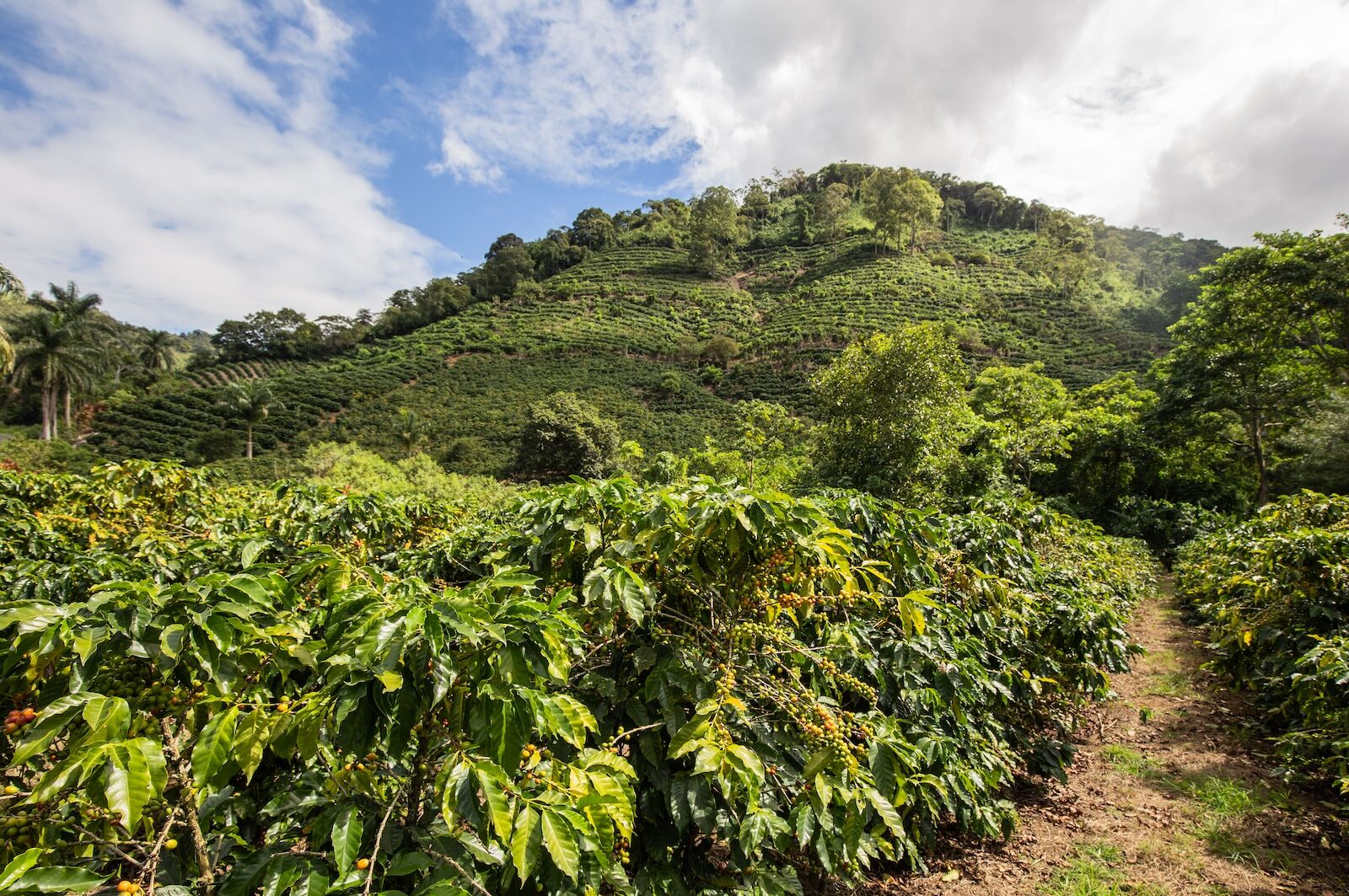
Photo: Serge Goujon/Shutterstock
The Central Valley is one of the most accessible destinations in Costa Rica, as it surrounds the capital city of San José. Although it’s not commonly visited by tourists, due to the strong agricultural industry here, the roads are not as daunting as some areas of the country, priming the area for tourism.
Fly into Juan Santamaría International Airport and add three or four days to your Costa Rica itinerary to explore this remarkable region that’s perfect for coffee lovers, foodies, birders, and adventure seekers alike. Then, you can continue to other Costa Rica favorites like Monteverde, Manuel Antonio, Peninsula Papagayo, or Nicoya Peninsula, Costa Rica’s Blue Zone.
While you can rent a car and drive the region, hiring a local guide for the Central Valley will allow you access to more off-the-beaten-path farms and experiences. Some, like Christhian Ureñam, Co-owner of Peregrinus Expeditions, actually grow their own coffee for fun and share it with those they lead throughout the country.
Your coffee fix in Naranjo
Coffee farms to visit

Photo: Sara Iannacone
Café Arbar, a hidden gem in the hills of Naranjo, is owned and operated by a husband-and-wife team, Don Carlos and Doña María Arrieta Barboza.
While their coffee is delicious, don’t leave without tasting the tea and wine. Both are produced with the husks of dried coffee cherries and are naturally sweetened with the mucilage, a fibrous honey layer surrounding the fruit. After the experience, I’m a coffee bean tea convert and prefer the lighter caffeinated alternative.
Tours are offered daily and cost approximately $40 per person, but they must be booked in advance. The easiest way to reserve is via your hotel, which will pair you with a bilingual guide. However, if you speak Spanish, you can message them via Instagram or email to reserve directly.

Photo: Sara Iannacone
For a facility that’s still locally owned but has larger production and a more commercial tour, visit Hacienda Espíritu Santo. Owned by a coffee cooperative in the area that produces coffee beans for big names like Starbucks, it offers five guided tours daily with bilingual guides for approximately $20 per person. It’s not typically crowded, so you can just walk in or call to reserve in advance if you want to be extra sure you’ll have a spot.
Try both tours to experience the difference between small- and large-scale production facilities.
Where to stay
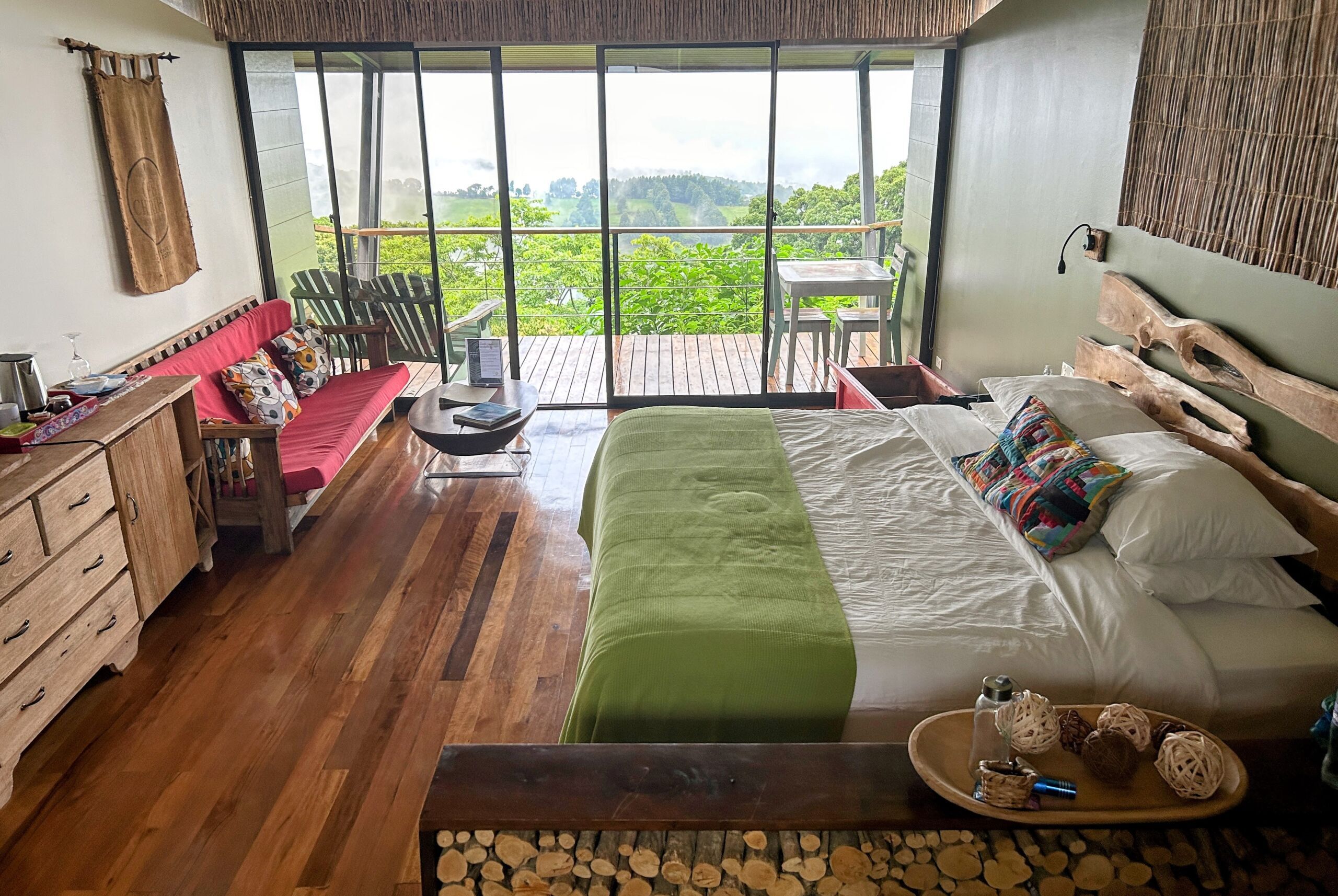
Photo: Sara Iannacone
Chayote Lodge, a former coffee farm turned hotel in the heart of a Central Valley cloud forest, is the ultimate stay for coffee lovers. Each of the comfortable bungalows, dubbed Recibidor Suites, is modeled after Costa Rican recibidores, or coffee-receiving stations, which you’ll still see peppering the streets of the Central Valley if you look for them. These traditional structures were historically where small coffee farmers would bring their harvest to be processed at larger mills.
The bungalows’ walls are adorned with authentic burlap coffee sacks and recycled wood fixtures, while the private suspended decks offer views of coffee farms in the Central Valley and the imposing volcanoes.
The best part is falling asleep, listening to the rain showering on the tin roof, and watching the storm hover above San José in the distance. Rates start around $225 per night.
What to do

Photo: Sara Iannacone
Spend an afternoon coffee tasting with Erasmo Arrieta. Arrieta is a certified coffee connoisseur, owner of Ciencia del Sabor, and (you may have guessed it) cousin of Don Carlos Arrieta of Café Arbar. It comes as no surprise that coffee runs in the family, as you’ll find it usually does in this area of Costa Rica.
Arrieta has studied coffee around the globe and has a penchant for finding the highest quality coffee for brands worldwide. His team has a tasting room and travels for coffee experiences throughout the region.
He sets up the ultimate station for you to explore the art of cupping, aka professional coffee tasting. You learn to rate coffee by picking up the aromas, flavors, body, acidity, uniformity, balance, and more. Every aspect of the experience is based on standards set by the global trade association, Specialty Coffee Association, so you’re truly an expert by the end.
Your coffee fix in Santa María de Dota
Coffee farms to visit

Photo: Sara Iannacone
Alto El Vapor is a family-owned coffee farm pioneering rural tourism in Santa María de Dota, a community that depends 100 percent on coffee cultivation. Arriving at their home first thing in the morning, you’ll hop in the back of a truck and hitch a ride to the family’s farm. Those who fear heights may want to brace themselves, as the farm is one of the highest-altitude farms not only in Santa María de Dota but also Costa Rica at large.
Half-day tours are approximately $40 per person. They include a tour of the 6,500-foot-high farm and corresponding coffee processing facilities and a professional coffee tasting of the farm’s magnificent beans in the family’s home, culminating with a home-cooked, traditional Costa Rican lunch. If there’s one thing I’d say you can’t miss in the region, this is it. Experiences can be booked via Instagram DM.
You can visit a handful of other micro beneficios, including Los Eucaliptos and La Chumeca, within 20 minutes of Alto El Vapor.
Where to stay

Photo: Sara Iannacone
Designed to be a birder’s paradise, Paraiso Quetzal Lodge is also a prime jumping-off point for local coffee adventures. The estate offers basic private cabins starting at $125 per night and a large main lodge where you’ll feel miles away from civilization, up in the clouds with metallic hummingbirds flitting by constantly.
The property has a network of trails where you can stumble across a stunning waterfall and hundreds of local bird species. When planning your hike, consider the altitude and give yourself some time to climb back up. If you’re a sea-level dweller like me, you’ll want to take a few breaks as the lodge sits at over 8,500 feet in the heart of the Talamanca mountain range.
The lodge also offers a daily birding tour, which is where I saw my first majestic emerald quetzal. I seriously considered becoming a birder after witnessing such beauty. Even for non-birders, it really is a little slice of paradise.
The lodge’s meals were some of the best I had in Costa Rica, which is good because there aren’t many other dining options in the area. I indulged in local trout with passion fruit sauce, beef with mushroom sauce, and traditional breakfasts with plenty of gallo pinto (a Costa Rican rice dish that’s a breakfast staple) and sweet plantains.
One thing to note is that there is limited cell service, and the WiFi connection is spotty in some cabins, so be ready to go off-grid and reconnect at the lodge during the day.
If you want something a bit more upscale, try Savegre Hotel Natural Reserve & Spa or Dantica Cloud Forest Lodge in San Gerardo de Dota nearby. It’s more of a drive to the coffee farms, but the town has easier access to adventure sports, birding and hiking, restaurants, and small shops.
What to do
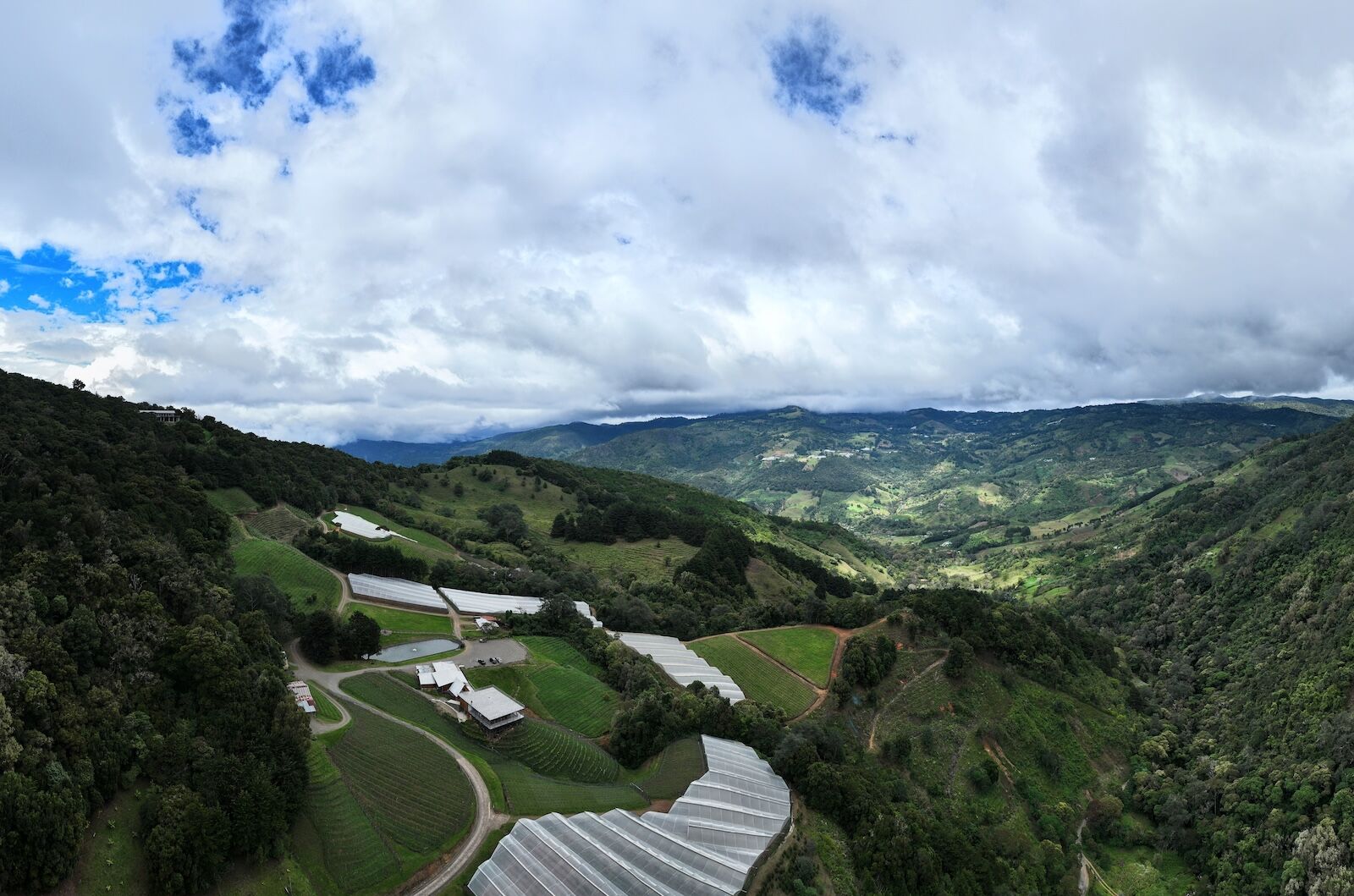
Photo: Joshua ten Brink/Shutterstock
One unique foodie highlight you can’t miss in this fruitful region is a vineyard tour. It’s not coffee, but it’s a perfect pairing.
Copey Estate Winery is the first commercial winery in Costa Rica. It’s not only figured out how to grow grapes in a non-traditional region, but it’s also making magic with uchuvas, or golden berries.
The winery offers standard daily, family, and private tours, starting at $85 per person, including tax. You explore one of the vineyards and the golden berry plantation before tasting three wines, the golden berry liqueur, and the low-ABV sparkling beverage they make with the same berries.
The best time to visit the Central Valley
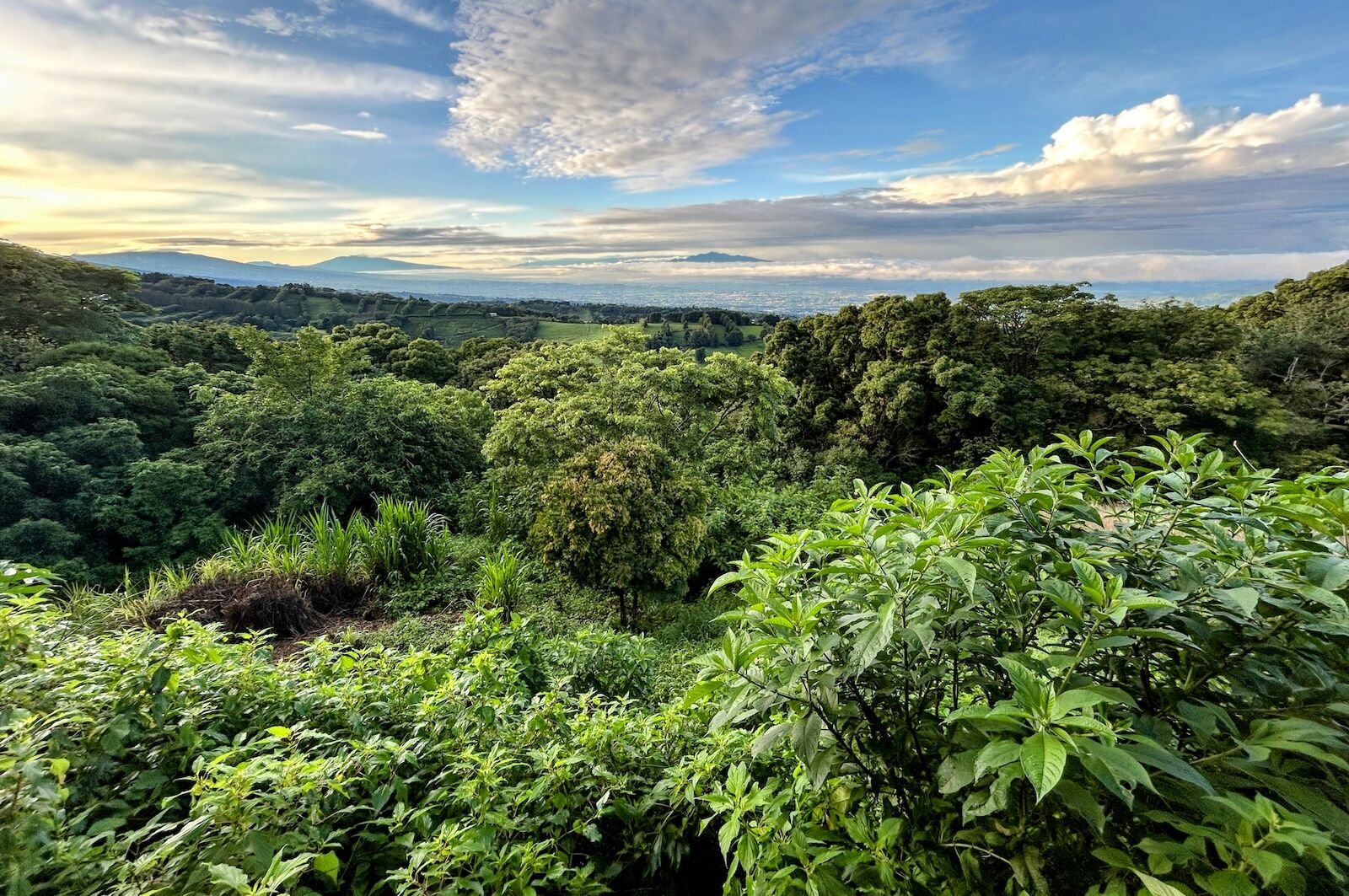
Photo: Sara Iannacone
The best time to visit Costa Rica to experience coffee culture is harvest season. The kicker, though, is that harvest season depends on the altitude of the crops.
For example, the best time to visit Alto El Vapor and Santa María de Dota is around February and March, whereas for Cafe Arbar in Naranjo, it’s December. Even if you can’t hit them all during the harvest, planning to visit around those months will drastically change the landscapes, with plump, red berries maturing on each tree.
I visited in July, and frankly, it wasn’t a great time for coffee tours. It was extra green due to the rainy season, which was beautiful, but this also made day trips unpredictable after 10 AM. A downpour is pretty much guaranteed every afternoon, and while that’s great for relaxing in the comfort of a bungalow, it’s not the best for trekking through coffee fields. Since many of these farms are off the beaten path, visiting during a downpour is not always safe or comfortable.
Plus, during this time of year, you won’t experience the essence of harvest season when entire Indigenous communities from around Central America come to the region to help locals hand-pick berries for processing. Every farmer told me the energy is palpable during that time of year. And since all coffee in Costa Rica is hand-picked, it’s an inevitably spirited season.
Pro tip: Pack boots no matter what season you go. It’s muddy out there, and my sneakers didn’t stand a chance.
How to support small local coffee farms

Photo: Sara Iannacone
One thing to remember as you’re planning your caffeinated adventure through the Central Valley is that much of the area is still new to tourism. While you can easily book coffee tours at places like Hacienda Doka or Starbucks’ first coffee farm, Hacienda Alsacia, with a quick click, I urge you to seek out small coffee farms in the local community, too.
You can search social media, ask the local chamber of commerce or tourism board, use regional tour companies, or contact Erasmo Arrieta via WhatsApp for an experience and suggestions.
Booking these local coffee experiences can often take more work, as communication is typically handled through WhatsApp or social media rather than a website or email. This approach is more manageable and cost-effective for the farms, as many are also out working in the fields daily.
However, the extra effort is truly worthwhile. It offers an authentic glimpse into the heart and soul of local coffee culture in Costa Rica, which is far beyond what more manufactured versions can provide and helps these communities preserve tradition and livelihoods.